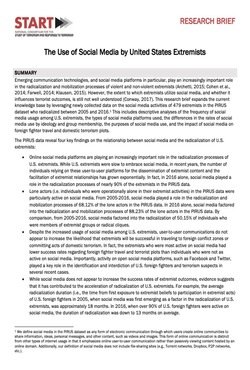By Liam Duffy
Salman Rushdie finally sensed that normality was returning to his life, some 33 years after Ayatollah Khomeini’s four paragraph fatwa called for his murder. “Nowadays my life is very normal again,” he told German magazine Stern in an interview over the summer of 2022. Just two weeks later, he was knifed multiple times on stage in Chautauqua, New York. Having evaded the fatwa’s enforcers for so long, one had finally penetrated the layer of secrecy and security which had followed Rushdie for his own protection all those years. Rushdie survived, but has lost sight in one eye and the use of one of his hands. The story which led to this point is by now well known. On Valentine’s Day 1989, Ayatollah Khomeini, the Supreme Leader of Iran, called for the British-Indian author’s death in a fatwa, offering financial and spiritual reward to any Muslim willing to carry out the murder. The assassination order also extended to anyone connected to the publication and promotion of Rushdie’s novel, The Satanic Verses. There are various elements to the novel that were perceived to be insulting to Islam and the Prophet Muhammad. These will not be detailed at length here, save to say that the novel’s title refers to verses in the Quran which were relayed to Muhammad as the word of God, but later revealed to be a deceptive ploy by the devil. In English, these verses were sometimes referred to as the Satanic verses. The novel itself recounts and reimagines episodes in the life of Muhammad. Although the novel’s publication was met with protest in various parts of the world (including the United Kingdom), it was Khomeini’s fatwa that ignited the affair into a global controversy. It transformed not only Rushdie’s life but the relationship between the West and the Muslim world, as well as between Western states and their growing Muslim populations. As Kenan Malik put it in From Fatwa to Jihad: “With his four-paragraph pronouncement, the ayatollah had transcended the traditional frontiers of Islam and brought the whole world under his jurisdiction. At the same time, he helped relocate the confrontation between Islam and the West, which until then had been played out largely in the Middle East and south Asia, into the heart of western Europe. For the West, Islam was now a domestic issue.” This is not to mention the impact on the individuals concerned. There were attempts on the lives of publishers, promoters, and translators in Japan, Italy, Turkey, and Norway. The first assassin to successfully complete his task murdered Hitoshi Igarashi, Japanese translator of The Satanic Verses, in a frenzied attack outside of his office at Tsukuba University in 1991. Like so many of these incidents, the perpetrator was able to slip away and never face justice. The most tragic episode of the affair would unfold in Anatolia, Turkey, where a riled-up crowd would set the Madimak Hotel ablaze, targeting a secularist activist who had translated excerpts of The Satanic Verses in a newspaper. Their target, Aziz Nesin, would escape the inferno but 37 people would not. Owing to the fatwa, Rushdie spent much of his life in hiding, always on the move, with his public appearances tightly controlled. But just as the fatwa was fading from memory, it remained every bit as valid—and lethal—as the day it was pronounced. As The Atlantic’s Graeme Wood explains, “fatwas cannot be rescinded posthumously,” and so the bounty still “hung in the air like a putrid smell, inhaled deeply for inspiration by devout followers of Khomeini and his successors.” The fatwa also helped set the precedent for later blasphemy affairs and controversies. To Hassan Nasrallah, the secretary-general of Hezbollah, there was little doubt that later blasphemy affairs were connected. During the fallout from the 2005 Jyllands-Posten cartoons of the Prophet Muhammad, he complained that “if any Muslim had carried out the fatwa of Imam Khomeini against the apostate Salman Rushdie, those despicable people would not have dared to insult the Prophet Muhammad.” The logic of the fatwa, and of the violence was not only punishment, but deterrence. The fatwa would also cross the sectarian divide in Islam. Part of its logic was for the Shia regime in Tehran to assert itself over their Sunni rivals in Saudi Arabia for de facto leadership of global Islam. This did not stop the Shia regime’s power play from energizing Sunni Islamist movements the world over, including the indirect empowerment of legal, non-violent Islamist groups in the West. As Western governments scrambled for interlocutors with the suddenly vocal “Muslim community,” offshoots of organizations like the Islamist Muslim Brotherhood or Jamaat-e-Islami were happy to fill that hole. As will be returned to later in the discussion, on blasphemy too, one sees the ideological distance between jihadists and other Islamist movements reduce. After the initial round of violence connected to The Satanic Verses, much of which bears the fingerprints of the regime in Tehran and its proxies, the Sunni jihadists of al-Qaeda and the Islamic State (IS) would later lead the bloodshed against blasphemers. Islamists of all stripes and from across the spectrum of non-violence to violent jihadists would, at various times, jostle to take the initiative on blasphemy disputes and position themselves as the true defenders of Islam. On some occasions and for political expediency, they would take the backseat in blasphemy affairs, waiting for the right moment to capitalize. This demonstrates that for all their professed zeal and the alleged offence taken, strategic thinking can in some cases take precedence, even when it comes to insulting Islam. Allegations of insulting Islam and the Prophet Muhammad have often carried dire and bloody consequences globally. The Jyllands-Posten cartoons affair, for instance, sparked rioting and unrest around the world in which hundreds died. Other events have reverberated similarly, such as the demonstrations, violence, and internet blackouts which greeted the uploading of a trailer for the film The Innocence of Muslims to YouTube. This report will focus on the bloody consequences of those allegations and accusations against individuals and institutions in the West, detailing both the plots and the successful attacks directed against those perceived to have insulted Islam and the Prophet. Also included are those plots where blasphemy has been cited as the motivation, but their target is not the alleged transgressor.
New York: The Counter Extremism Project (CEP) , 2023. 46p.


















